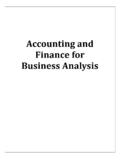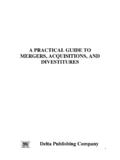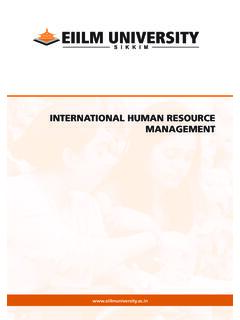Transcription of A PRACTICAL GUIDE TO MERGERS, ACQUISITIONS, AND …
1 1 A PRACTICAL GUIDE TO MERGERS, ACQUISITIONS, AND DIVESTITURES Delta Publishing Company 2 Copyright 2009 by DELTA PUBLISHING COMPANY Box 5332, Los Alamitos, CA 90721-5332 All rights reserved. No part of this course may be reproduced in any form or by any means, without permission in writing from the publisher. 3 TABLE OF CONTENTS CHAPTER 1 MERGERS AND ACQUISITIONS CHAPTER 2 DIVESTITURE GLOSSARY 1 CHAPTER 1 MERGERS AND ACQUISITIONS LEARNING OBJECTIVES: After studying this chapter you will be able to: 1.
2 Define mergers. 2. List twelve conditions required to merge. 3. Define and perform due diligence. 4. Identify information to consider before "doing a deal 5. Describe antitrust guidelines 6. Explain M & A percent rules. 7. Plan for mergers and acquisitions. 8. Decide on acquisition terms. 9. List factors in determining a price. 10. Describe grading criteria. 11. Summarize acquisition strategy and process. 12. Finance the merger. 13. Use capital budgeting techniques for M&A analysis. 14. Explain the effect of merger on earnings per share and Market price per share.
3 15. Describe the risk of the acquisition. 16. Explain the methods of hostile takeover bids. 17. Outline SEC filing requirements and tax considerations 18. Enumerate defensive measures by targeted company. 19. Determine the value of a targeted company. 20. Describe accounting, reporting and disclosures for business combinations 21. Discuss the importance of corporate development officers (CDOs) M&A teams For years, academic studies maintained mergers and acquisition (M&A) deals destroyed shareholder value. In 2006, however, businesses around the globe bought (and therefore sold) more companies for more money than ever.
4 It was not just a year of record merger volume - more than $3,800 billions - but also a merger market with unprecedented breadth, across geographies and industries. M&A transactions in the current merger cycle differ in significant ways from those of the 1990s, and this probably explains why so much value has recently been created. Specifically, this current merger boom is characterized by Horizontal consolidation with significant potential for cost synergies. The use by acquirers of existing cash and borrowed money (after-tax cost) to purchase the (relatively higher cost) equity of acquired companies.
5 Much lower acquisition premiums being initially paid. Mergers and acquisitions can result in new organizations whose financial and strategic options are much improved. They are driven by globalization, a long-term market, various barriers to growth, which make M&As a valuable tool by which companies can quickly attempt to increase revenue. 2 This chapter discusses all facets of M&As including deciding on terms, key factors to consider, pros and cons of mergers, types of arrangements, evaluative criteria, valuation methods, financial effects of the merger, holding companies, takeover bids, SEC filing requirements, accounting and reporting requirements for business combinations, and financial analysis of combinations.
6 External growth occurs when a business purchases the existing assets of another entity through a merger. You are often required to appraise the suitability of a potential merger as well as participate in negotiations. Besides the growth aspect, a merger may reduce risk through diversification. The three common ways of joining two or more companies are a merger, consolidation, or a holding company. In a merger, two or more companies are combined into one, where only the acquiring company retains its identity. Generally, the larger of the two companies is the acquirer.
7 A merger is a business combination in which the acquiring firm absorbs a second firm , and the acquiring firm remains in business as a combination of the two merged firms. The acquiring firm usually maintains its name and identity. Mergers are legally straightforward because there is usually a single bidder and payment is made primarily with stock. The shareholders of each merging firm involved are required to vote to approve the merger. However, merger of the operations of two firms may ultimately result from an acquisition of stock. With a consolidation, two or more companies combine to create a new company.
8 None of the consolidation firms legally survive. For example, companies A and B give all their assets, liabilities, and stock to the new company, C, in return for C s stock, bonds, or cash. A holding company possesses voting control of one or more other companies. The holding company comprises a group of businesses, each operating as a separate entity. By possessing more than 50% of the voting rights through common stock, the holding company has effective control of another company with a smaller percent of ownership. Depending on the intent of the combination, there are three common ways in which businesses get together so as to obtain advantages in their markets.
9 They are: Vertical merger. This occurs when a company combines with a supplier or customer. An example is when a wholesaler combines with retailers. Horizontal merger. This occurs when two companies in a similar business combine. An example is the combining of two airlines. Conglomerate merger. This occurs when two companies in unrelated industries combine, such as where an electronics company joins with an insurance company. MERGERS Outstanding planning and execution are essential for a successful merger. Integration is reached only after mapping the process and issues of the companies to be merged.
10 Even then just 23% of all acquisitions earn their cost of capital. When M&A deals are announced, a company s stock price rises only 30% of the time. In acquired companies, 47% of executives leave within the first year, and 75% leave within the first three years. Synergies projected for 3M&A deals are not achieved 70% of the time. Productivity of merged companies can be affected by up to 50% in the first year and financial performance of newly merged companies is often lacking. While there is no set formula to guarantee a successful merger, in order to minimize the negative impacts previously discussed, a map of M&A process and issues should be developed.












